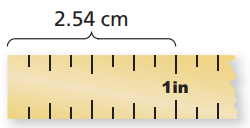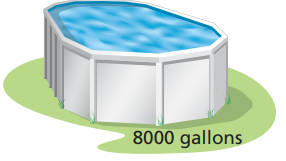WRITE THE INVERSE VARIATION FUNCTION FOR THE GIVEN VALUES OF X AND Y
Subscribe to our ▶️ YouTube channel 🔴 for the latest videos, updates, and tips.
Direct variation :
Two variables x and y show direct variation when
y = ax
for some nonzero constant a.
The variables x and y vary directly. Use the values to write an equation that relates x and y.
Problem 1 :
y = 4; x = 2
Solution :
Direct variation :
y = ax ----(1)
Here a is constant of variation.
Applying x = 2 and y = 4, we get
4 = a(2)
2a = 4
a = 2
Applying the value of a in (1), we get
y = 2x
Problem 2 :
y = 25; x = 5
Solution :
Direct variation :
y = ax ----(1)
Here a is constant of variation.
Applying x = 5 and y = 25, we get
25 = a(5)
5a = 25
a = 5
Applying the value of a in (1), we get
y = 5x
Problem 3 :
y = 60; x = 15
Solution :
Direct variation :
y = ax ----(1)
Here a is constant of variation.
Applying x = 15 and y = 60, we get
60 = a(15)
15a = 60
a = 4
Applying the value of a in (1), we get
y = 4x
Problem 4 :
Write a direct variation equation that relates x inches to y centimeters.

Solution :
Here 2.54 cm = 1 inch
When x = 1 inch, y = 2.54 cm
When x = 2 inch, y = 2(2.54) ==> 5.08
Constant of variation is 2.54
y = ax
y = 2.54 x
Problem 5 :
The weight of an object in our solar system varies directly with the weight of the object on Earth.

a) Complete the table
Solution :
Let E, J and M be the weights on Earth, Jupiter and Moon respectively.
E ∝ J
E = kJ
Finding the missing value for Jupiter :
If E = 100, J = 214
100 = k(214)
k = 100/214
k = 0.46
Applying the value of constant of variation.
E = 0.46 J
When E = 120, J = ?
120 = 0.46(J)
J = 120/0.46
J = 260.87
Finding the missing value for Moon :
E ∝ M
E = kM
If E = 120, M = 20
120 = k(20)
k = 120/20
k = 6
Applying the value of constant of variation, we get
E = 6M
When E = 100, M = ?
100 = 6(M)
100/6 = M
M = 16.6

Problem 6 :
Tell whether x and y show direct variation. If so, write an equation of direct variation.

Solution :
If x = 500, y = 40
Checking the relationship for x and y:
y = ax
40 = 500a
a = 40/500
a = 2/25 ----(1)
If x = 700, y = 50
50 = 700a
a = 50/700
a = 1/14----(2)
Constant of variation is not equal, then it is not direct variation.
Problem 7 :
The amount of chlorine in a swimming pool varies directly with the volume of water. The pool has 2.5 milligrams of chlorine per liter of water. How much chlorine is in the pool?

Solution :
Let C be the quantity of chlorine and gallon of water be G.
When C = 2.5 milligram, G = 1000 gallons
C directly varies to G, then
C = k G
k is the constant of variation.
2.5 = k (1000)
k = 2.5/1000
k = 0.0025
Applying the value of k, we get
C = 0.0025 G
When G = 8000 gallons, C = ?
C = 0.0025 (8000)
C = 20 milligrams.
Subscribe to our ▶️ YouTube channel 🔴 for the latest videos, updates, and tips.
Recent Articles
-
Finding Range of Values Inequality Problems
May 21, 24 08:51 PM
Finding Range of Values Inequality Problems -
Solving Two Step Inequality Word Problems
May 21, 24 08:51 AM
Solving Two Step Inequality Word Problems -
Exponential Function Context and Data Modeling
May 20, 24 10:45 PM
Exponential Function Context and Data Modeling